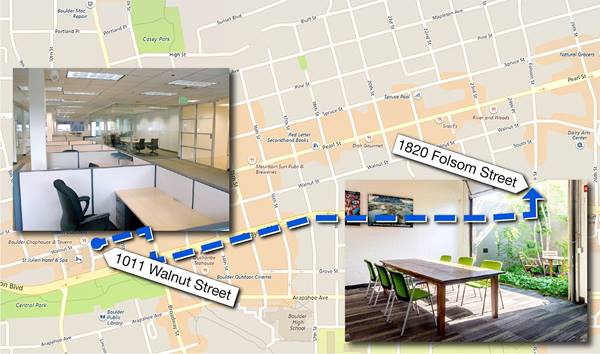This article originally appeared in the Colorado Real Estate Journal. See it here.
The typical office lease expires every five to ten years. If that benchmark happens to land in an inflationary market, like the one we are seeing today, office tenants can expect to be hit with a rent increase of anywhere from 20 to 100 percent.
While Denver’s economy is outpacing the national average, most businesses we talk to have not seen bottom-line growth proportionate to the increase in leasing rates. Those who have seen exemplary growth, have also added more office dwelling staff and the need for additional square footage. As tenants recast their lease midterm to capture additional space in their building (many times, not available in desirable locations) they typically do this in exchange for a much higher rental rate and longer lease term. This compounding effect continues to eat up a larger percentage of their profits.
What is the solution? How can office tenants control occupancy expense in an inflated market? Options vary based on a company’s culture and recruiting strategies, growth rate and financial structure. The most common ways to control costs are to re-envision the workspace, downgrade in building class or move to a different market.
Densify
The buzzword in office space for the last several years has been densification, and for good reason. The BOMA (Building Owners and Managers Association) standard recently changed how building rentable square footages can be calculated. This modification now allows office building owners to allocate ‘building amenities’ such as common area; work out rooms, showers and lockers, meeting rooms and lounges, and even outdoor deck space across the entire rentable square footage. Often times companies are forced to decrease their physical footprint just to maintain the same rentable square footages. Cresa has had clients threatened with up to an 11 percent increase in rentable square footage, while trying to renew in the exact same premises they occupied for the past seven years. Tenants with traditional private offices may consider an open space layout. Those currently in an open space office might consider a benching concept. This could also mean companies consider changing their workstyles by adopting a hoteling concept, allowing employees more flexible work hours or even encouraging the option to work from home.
Downgrade
If changing workstyle and culture isn’t a viable option, another consideration is to downgrade in building class. Tenants in an A-class building may be able to get more square footage near the desired location in a B or C-class building. The impact that this can have on company culture and ability to attract and retain employees in this tight labor market, can deplete a company’s most precious resource. However, aligning with a creative real estate advisory team, to include not just brokerage, but architect/designers, furniture consultants and project management can reinvent a workspace in a lesser building within a constrained budget. Lowering occupancy costs, but keeping within their desired geographical location, to not interrupt delicate employee commute times.

Move
Location is everything, but companies that are willing to make a change can save exponentially. The change in location doesn’t have to be significant, just enough to change submarkets, however slightly.
Greenhouse Partners/Scholars is the perfect example of a growing company who didn’t want to pay more. With the addition of a third high growth company utilizing shared resources, their space in Downtown Boulder couldn’t accommodate adjacent growth and saw an increase in rental rate of 35 percent in a three-year period. The lack of any quality relocation alternatives in Downtown Boulder and exorbitant spikes in rate, allowed a forward-thinking company to relocate to a converted/refurbished former motorcycle garage turned office building. This slight compromise, moving just one mile east to 1820 Folsom Street, allowed them to keep their rent virtually the same, in a new space that allowed room for growth, while continuing to provide the walkable amenities. To top it off, they also receive free parking for their employees. Something unheard of, just a few blocks away.
An inflated market doesn’t mean that office tenants coming to the end of lease terms must accept the price hike. There are plenty of creative solutions out there, it’s just a matter of finding the solution that fits the individual business model and utilizing the expertise of a professional tenant representation advisor to orchestrate the process.
